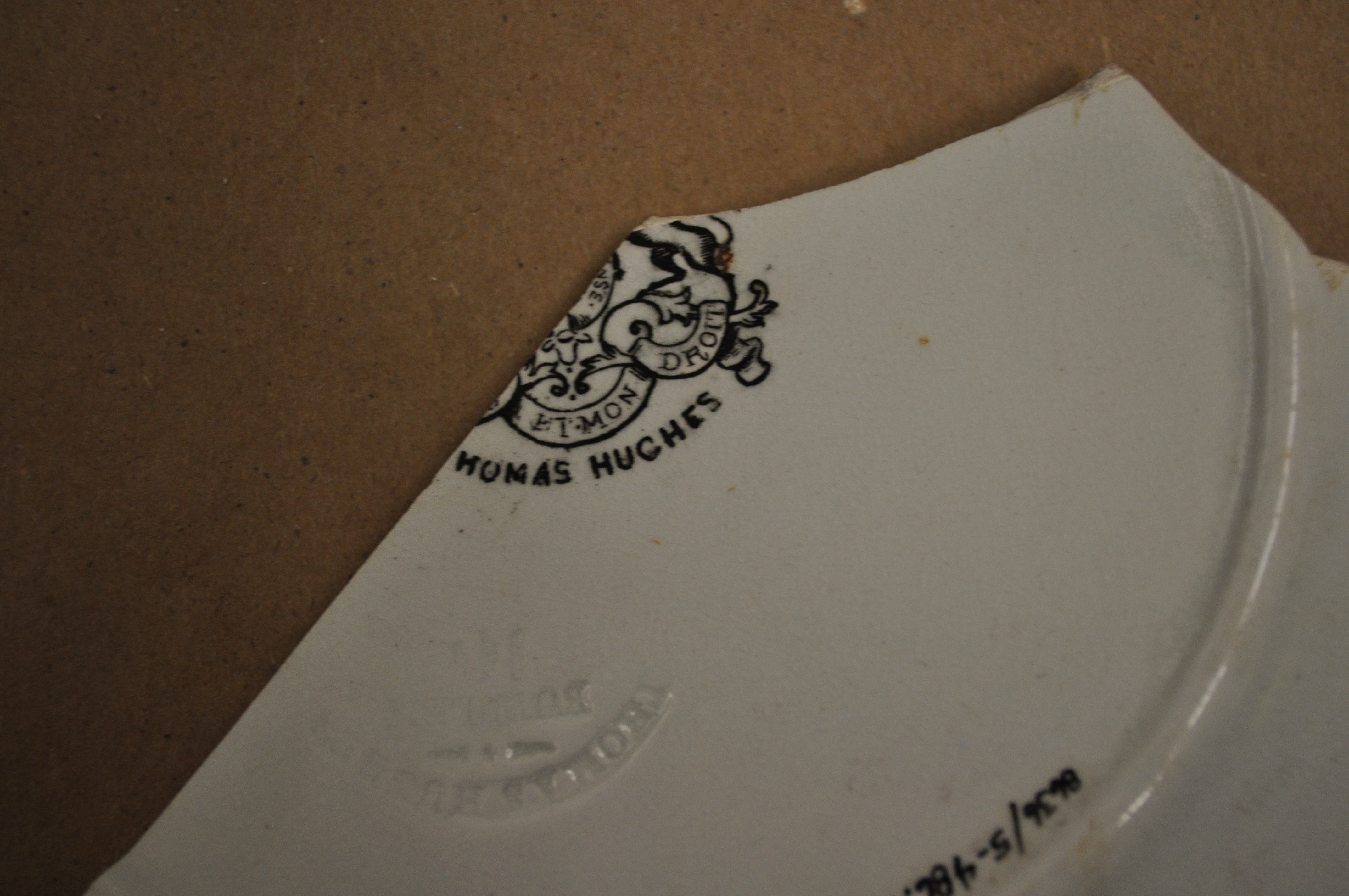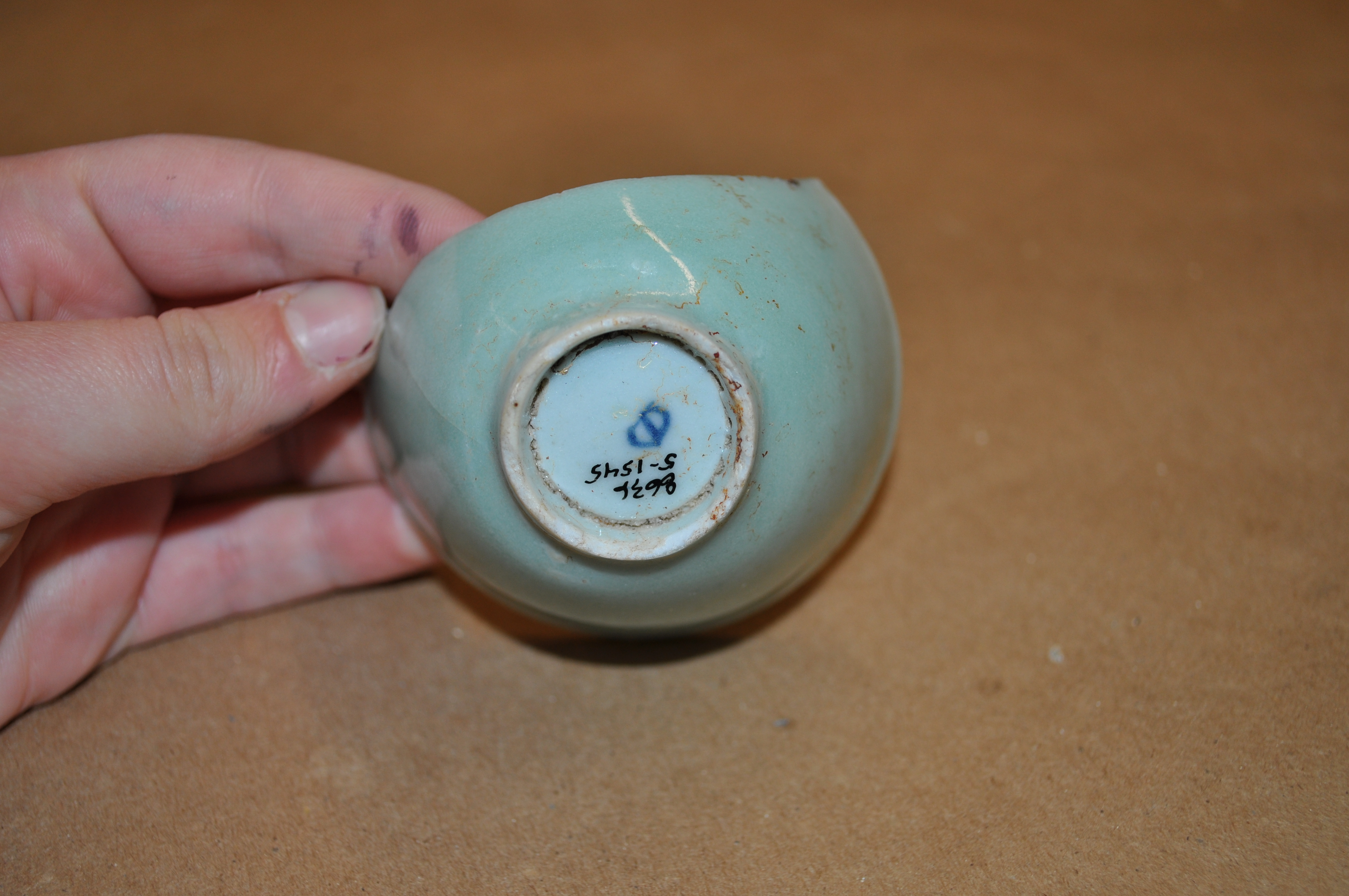My name is Kate Rose and I am a sophomore majoring in Archaeology and Religious Studies, and I have been working in Professor Voss’s Historical Archaeology Lab as a student intern since the beginning of April this year. Although much of my previous experience with archaeology has dealt with prehistory, specifically early farming societies in the ancient Near East, I am very interested in getting involved with historical archaeology research. I am very excited to be a part of this data-rich and opportunity-rich endeavor and to learn more about the nature of society and cultural exchange in a 19th century Chinatown on the West Coast
 The specific project I am currently involved in is identifying, organizing, researching, and cataloguing of Chinese and European ceramics excavated in the late 1980’s from the Market Street site. One of the aspects of ceramic analysis that I find myself increasingly drawn to and fascinated by is the study and identification of “maker’s marks.” Because our sample of ceramic artifacts is so large and diverse, we have large collections of both Chinese and European manufactured pieces, with maker’s marks ranging from Chinese characters and symbols, to European family crests with gothic Anglicized lions, and even Unicorns! I think the study of maker’s marks is incredibly interesting because they present the opportunity to place an artifact in a specific chronological context which we as archaeologists can use to understand the social, cultural, and commercial climate of a community and settlement. But to me, they also represent an aesthetically appealing connection to an individual persona and to a greater trade network. Maker’s marks personalize ceramic pieces and designs, and embed memory and connectivity within them.
The specific project I am currently involved in is identifying, organizing, researching, and cataloguing of Chinese and European ceramics excavated in the late 1980’s from the Market Street site. One of the aspects of ceramic analysis that I find myself increasingly drawn to and fascinated by is the study and identification of “maker’s marks.” Because our sample of ceramic artifacts is so large and diverse, we have large collections of both Chinese and European manufactured pieces, with maker’s marks ranging from Chinese characters and symbols, to European family crests with gothic Anglicized lions, and even Unicorns! I think the study of maker’s marks is incredibly interesting because they present the opportunity to place an artifact in a specific chronological context which we as archaeologists can use to understand the social, cultural, and commercial climate of a community and settlement. But to me, they also represent an aesthetically appealing connection to an individual persona and to a greater trade network. Maker’s marks personalize ceramic pieces and designs, and embed memory and connectivity within them.
This is a maker's mark on the base of a Celadon cup. We have not been able to identify this mark yet.
In terms of specific artifacts, I began working with a large collection of Chinese porcelains, with a bluish-teal glaze, characteristic of imitation celadon. In addition to the simply adorable little teacups, the collection was interesting because many of the pieces displayed a small, and as far our research has indicated, undocumented maker’s mark on the base of the piece. As you can see, the mark is a very simple ovular shape, with what looks like a slash through the middle. I especially look forward to working more with “mystery” maker’s marks like this one and trying to identify some sort of pattern of production or origin associate